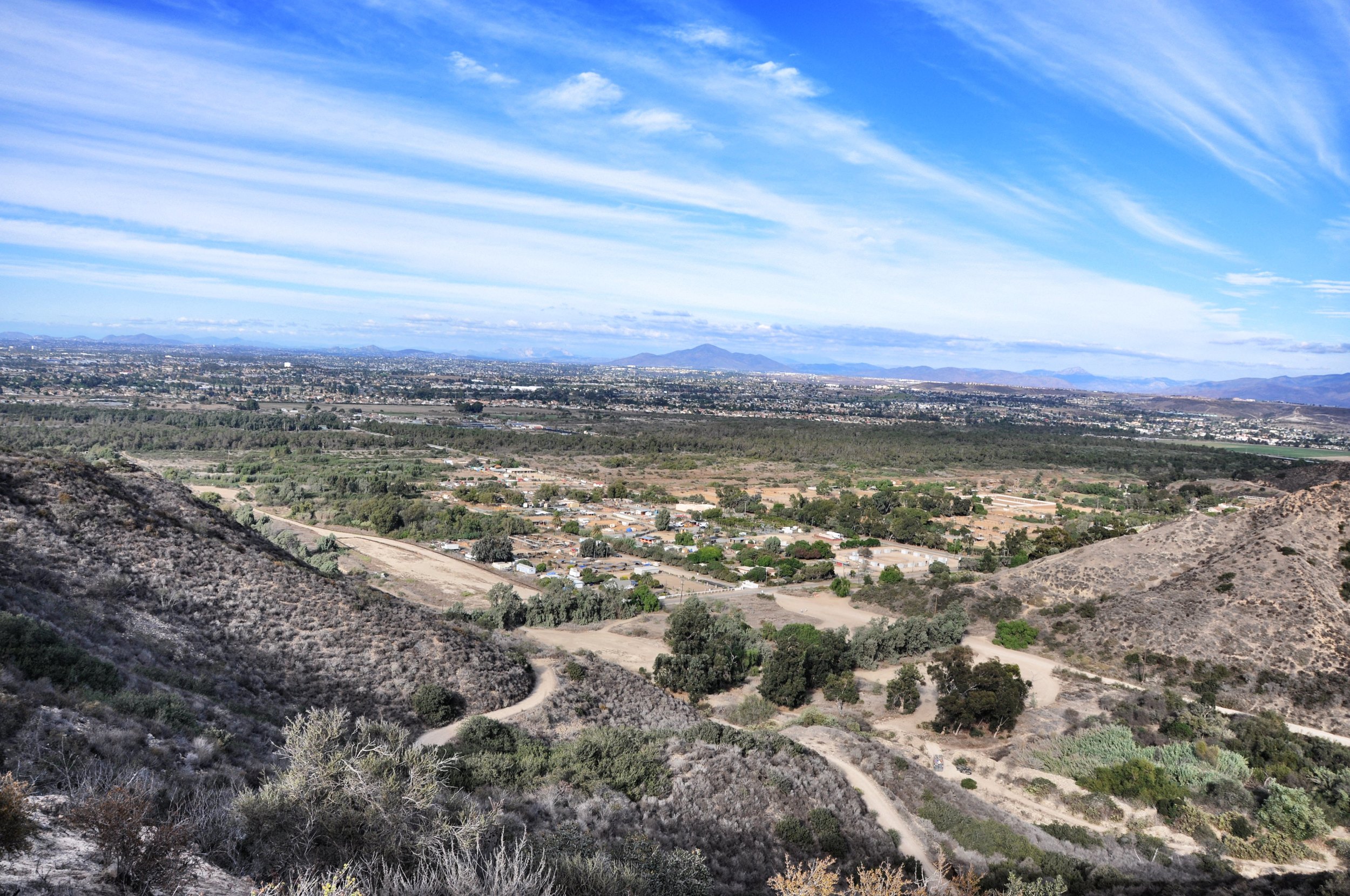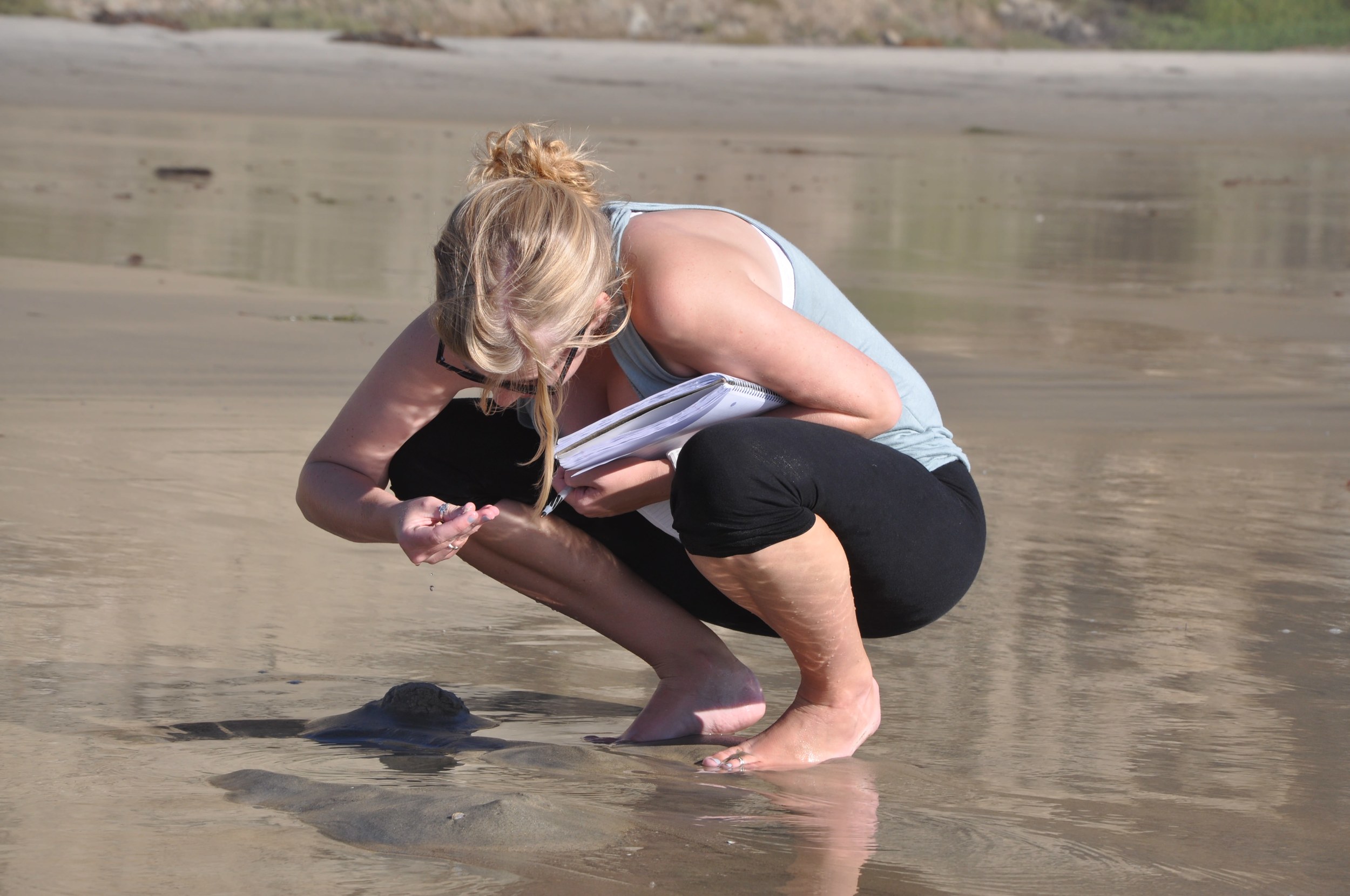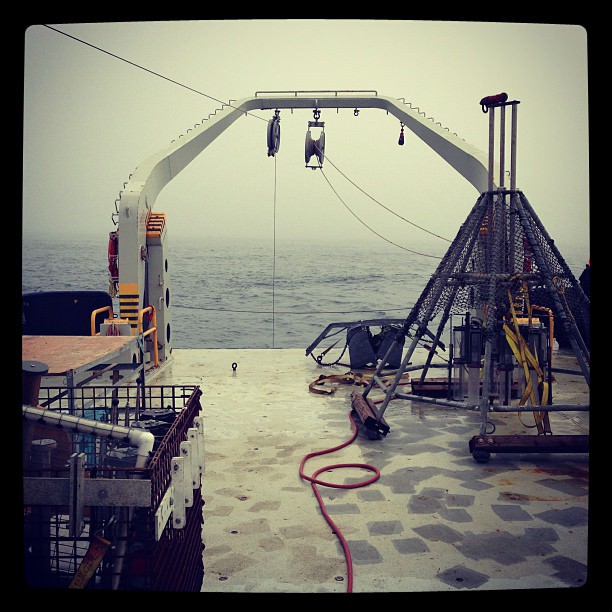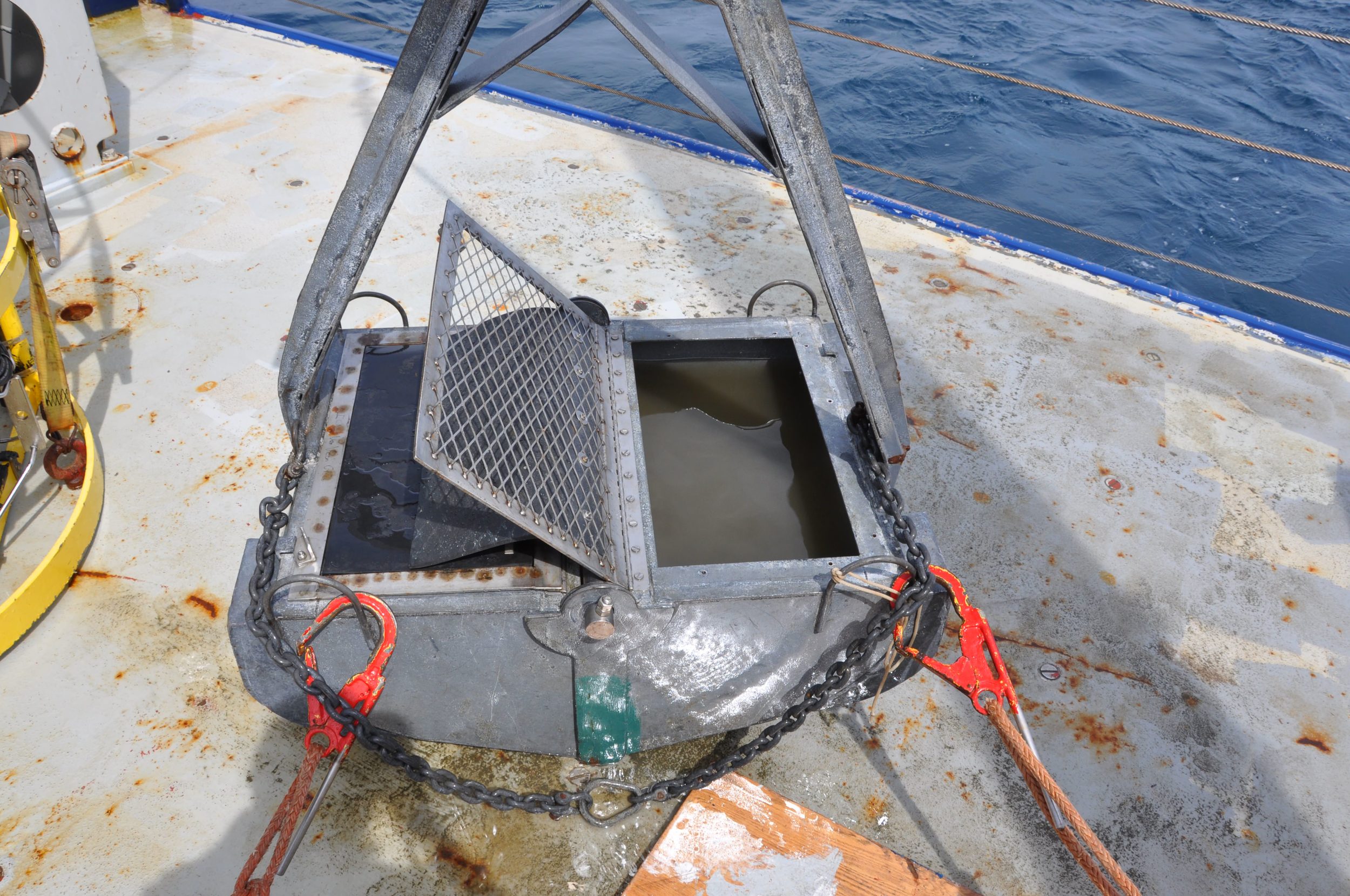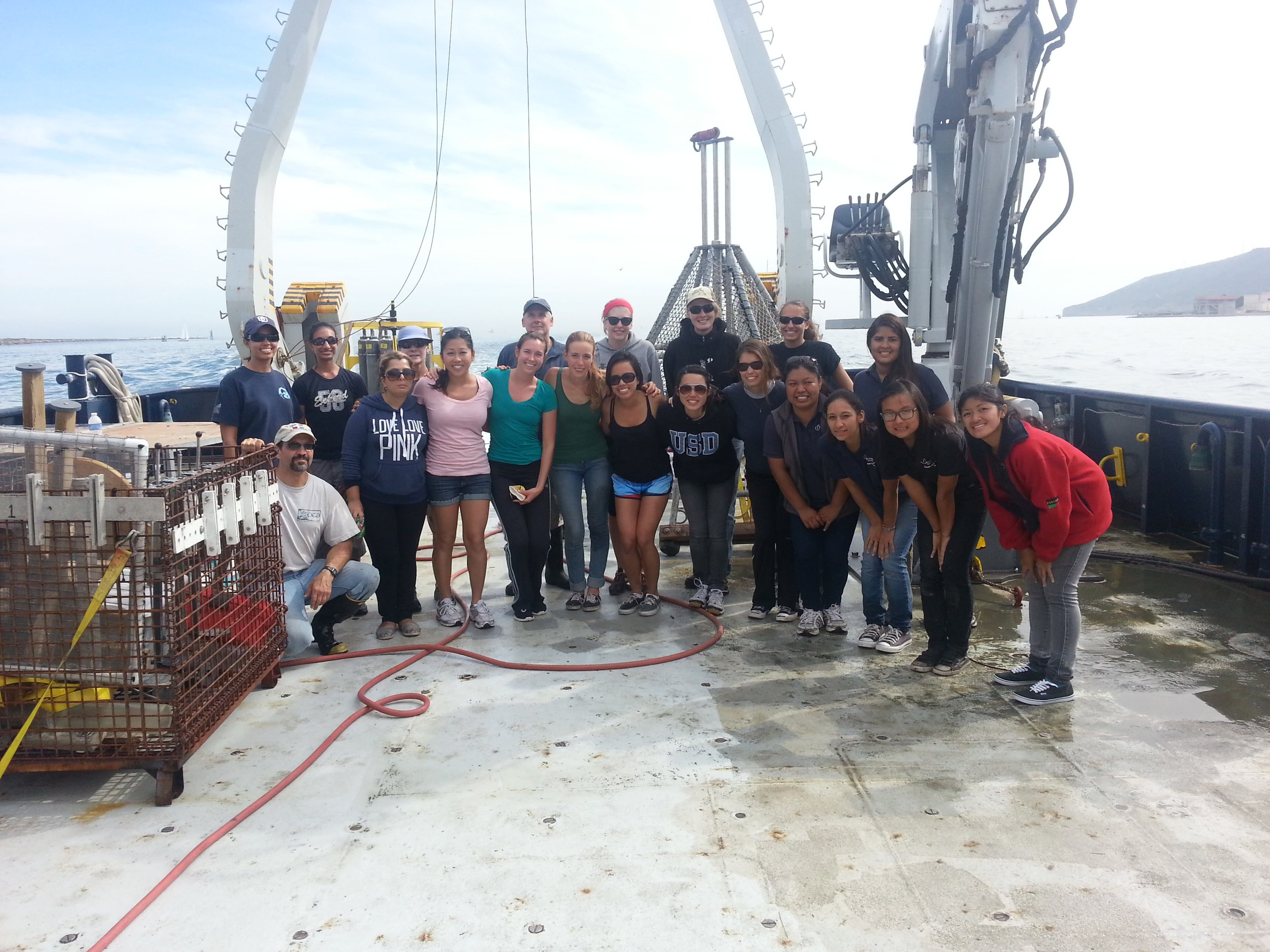so no updates right now, but I will share an amusing video
Wetland Field Trip
We had a great field trip in our Biological Oceanography course yesterday out to the Tijuana River National Estuarine Research Reserve (TR NERR), right on the US/Mexico border.
Declared a "wetland of international importance" by the International RAMSAR convention in 2005, the TR NERR is the largest intact wetland in southern California. As they note on their website:
The Tijuana River National Estuarine Research Reserve preserves, protects, and manages the natural and cultural resources of the Tijuana River Estuary by focusing on research and education with compatible recreation and resource use. The Reserve encompasses beach, dune, mudflat, salt marsh, riparian, coastal sage scrub, and upland habitats surrounded by the growing cities of Tijuana, Imperial Beach, and San Diego. Critical issues confronted by the Reserve include habitat conservation and restoration, endangered species management, management of the wastewater from Mexico, sediment management, and the integration of recreation
We were shown around the border area (up to the fence itself) by Dr. Jeff Crooks, Research Coordinator for the reserve. Jeff explained some of the social, environmental, and health challenges facing the estuary and the border region, and how the reserve is working, on both sides of the border, to improve conditions for Mexican and US citizens alike.
We also got to get an up-close look at the "model marsh", a fascinating created wetland built under the direction of Dr. Joy Zedler, founder of the Pacific Estuarine Research Laboratory. The model marsh was built to help us learn more about how to most effectively create and restore salt marshes. This is particularly important here in CA, where over 90% of our historic wetlands have been lost!. It was a great opportunity to see an example of science that is both "basic" (answering essential questions about how the world works) and "applied" (helping to solve real-world problems).
the perfect cup
Adam Lisagor (@lonelysandwich), of "You Look Nice Today" and "Sandwich Video" fame, demonstrates how a $25 device (the AeroPress) can help you make the PERFECT cup of coffee.
Biological Oceanography Sandy Shores Field Trip
Had a ridiculously good field trip to the Scripps Coastal Reserve today with my section from MARS 451 (Bio Oceans). We took to the shores, notebooks in hand, to examine some of the environmental gradients faced by sandy shore organisms; to look for examples of patchiness (and mechanisms producing it); and to try and identify major players in the sandy beach community.
We could not have had better weather or a more inquisitive, engaged group of undergrads and grad students. We found mole crabs, Donax, polychaetes, Pismo clams, amphipods, kelp holdfasts - the list goes on and on - so much for the idea of a depauperate community. We also ran into some folks from the Dayton Lab at Scripps Institution of Oceanography, surveying the effect of trampling on the rocky intertidal just to the south of our study site.
Anyway, being out in such a beautiful place, with such a great group of students, almost makes me feel guilty calling this my "job"!
climate change affects native & exotic species differently...in some cases
Venerupis philippinarum - photo from wikimedia commons
A really interesting meta analysis by Sorte et al in Ecology Letters. The general suspicion has been that climate change would favor exotics species over natives, but the specific results are all over the map. Sorte et al compiled a substantial set of studies looking at the issue, and found a broad pattern - in terrestrial systems, they found no bias for exotics from climate change, while for aquatic taxa, non-natives tended to show stronger responses to climate change. Their summary:
Across systems, there could be a higher risk of invasion at sites becoming more climatically hospitable, whereas sites shifting towards harsher conditions may become more resistant to invasions.
An interesting and highly nuanced paper - I highly recommend that you read the whole thing - get it HERE
first usd sacnas taquiza social was a blast
Last weekend we had our first usd sacnas meeting of the year out in the beautiful Strata Plaza behind the Shiley Center for Science and Technology. It was a great time - we got to meet interested (and interesting) students, enjoy fresh, authentic tacos, and listen to some professional mariachi music, compliments of Mariachi Juvenil de San Diego and Serafin Paredes from the University of San Diego Music Department. I should point out that the mariachis were as fun to talk to as their were to listen to!
For those who missed it, there will be more events this semester - please check out usdsacnas.org on occasion for updates.
Long Beach Invasion
ok, not as dramatic as this maybe - photo from http://edkoehlerdesigns.com
On September 27 & 28, the California Estuarine Research Society (CAERS) held its 10th annual conference, hosted at CSU Long Beach by Dr. Christine Whitcraft. This marked the highest attendance and representation by University of San Diego ever at a CAERS conference, with more than 15% of all presentations being given by University of San Diego faculty, students, or affiliates, including one of the keynote addresses on ocean acidification by our own Dr. Nathalie Reyns.
It has been great to see the increase in participation of University of San Diego at the California Estuarine Research Society - we were represented by only one talk between 2003-2007, and that has grown to 15% of the talks and a plurality (almost 20%) of the attendees in 2012. CAERS always has a fascinating series of talks and posters, and is a mustn't-miss event for wetland scientists, students, and managers in California and Baja California!
the USD Sproul cruise, Sep 22/23, 2012
For the 13th year in a row, the Marine Science & Environmental Studies Department used Scripps Institution of Oceanography's R.V. Sproul as a research vessel from which to launch our own studies of the coastal ocean off of Point Loma. This year (as usual) we were joined by a small contingent of colleagues from Indiana State University (studying foraminifera), and students from our Biological Oceanography and Geological Oceanography courses.
We also had the pleasure of hosting several students from the Chemistry department, who are using the samples to study human impacts in the water column and the sediment of nearshore waters.
And for the fourth year in a row, we were accompanied by a group from the local science education non-profit, Ocean Discovery Institute. This participation was made possible through the generous support of the National Science Foundation's Opportunities for Enhancing Diversity in the Geosciences program, and has helped us allow participation of underrepresented students in authentic research, side by side with scientists, undergraduate, and graduate students from the University of San Diego.
Now our students are busy analyzing these samples, learning more about the scientific process, oceanography, and local waters. It was an amazing 24 hours!
this kid can become a scientist
but it turns out she will have some obstacles to face, and one of them will be her professors.
In a depressing study published in PNAS, researchers provided scientists from research-oriented universities with one of two sets of otherwise-identical application materials for a lab tech position - one group received a set with a female name, the other a male name.
Faculty rated the male student as more competent and more "hireable", and suggested higher starting salaries for the male applicants as well. Worse (and exacerbating the situation), faculty also were more likely to want to mentor the male student than the female one.
Shockingly, this result was independent of the gender of the faculty member - women scientists were showing the same gender bias as men.
Reading the paper, it is clear that this bias is subtle and likely not recognized by those exhibiting it. While we should all be deeply troubled by these data, my interpretation of the article is that these biases are in all likelihood unintentional and subconscious. If we can make ourselves really pay attention to our interactions with women in science, maybe we can start to change the culture.
Maybe that little kid will have an easier time becoming a scientist, if that's what she chooses.
The first step, it seems, is recognizing that you have a problem.
my book chapter is finally out
Well, I should say "our book chapter" - I was lucky enough to work with Dr. Kenneth Raposa, who is smart, funny, and a great wetland ecologist (with good taste in cocktails).
The whole volume is great for those interested in tidal marsh management and restoration.
amazing orator
love or hate the man, agree or disagree, Clinton is simply a phenomenal speaker. Click here to read the extemporaneous version versus the scripted version of his speech at the DNC (on The Atlantic Wire)
via daringfireball - arguably the best blog out there these days
halloween
need I say more?
Mr Wizard is like Mr Rogers
only mean.
disappointing rejection
I am (and remain) a fan of Apple and their products, but this article about a rejection from the app store is sorely disappointing.
Via the great tech blog Daring Fireball.
Open Access Journals
I am hardly on the cutting-edge of recognizing the increasing importance of open access to scientific endeavors, nor am I the most visible/vocal (e.g., see posts by the always-interesting Jarrett Byrnes). That said, I am continuing to be convinced that, despite some of my colleagues' misgivings about PLoS One and the like, this is a solid and respectable venue in which to publish. The fact that talented, accomplished, well-published scientists are publishing there; Impact Factors (while a very imperfect metric) are pretty high; and that some 80+% of the papers published in PLoS One in 2010 have been cited (as of Spring 2012) - well, this is an outlet that it is foolish to ignore.
Check out this interesting post (and accompanying discussion) on the topic.
good graphic design helps communicate science
an amazing collaboration
I am incredibly impressed with the artist here AND with Lisa Levin (as usual!) - what great combination of art and science!
working in Bahía de los Angeles
tough to access the Internet, but thought I would share this morning’s view from my cot. Tough to complain about field research!

strangely quiet around here
never fear - I will get back to the occasional post, but we have become new homeowners, and currently - well, our bathroom looks like this:
so we are occupied trying to make the place livable, as well as research and we each have a lot of undergrads in the lab this summer!
Will get back to posting bits of science trivia soon!
drew











